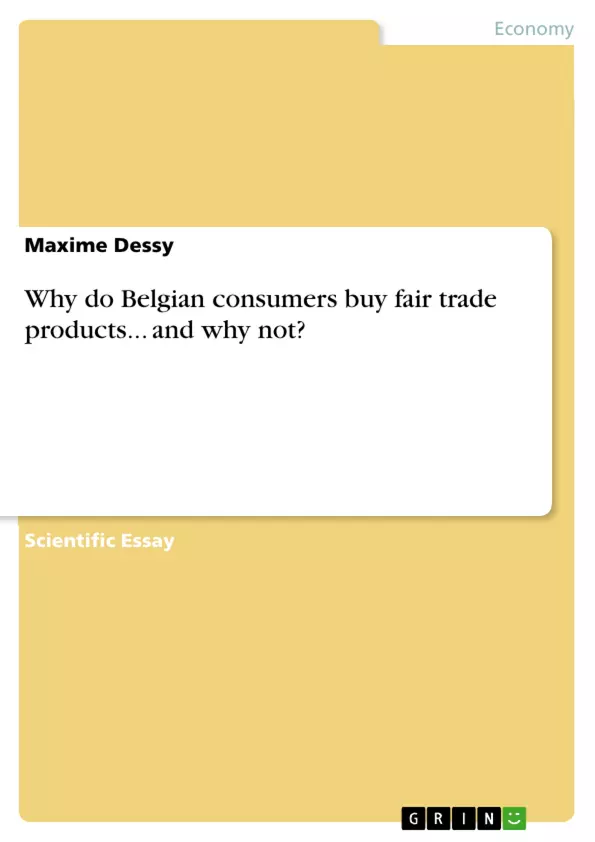This essay tries to identify (using a marketing mix approach of Fair Trade products) the main determinants driving customers to choose fair trade products rather than their free trade equivalents. It also highlights the major difficulties encountered by companies active in the fair trade market while trying to inform consumers and to influence their buying behaviour. On that basis, this paper proposes several solutions in order to ameliorate the Fair Trade marketing offer. Arguments and critics included in this essay are supported by recent scientific researches in the Fair Trade marketing area.
Inhaltsverzeichnis (Table of Contents)
- Introduction:
- Problem formulation & Methodology:
- Marketing Mix of fair Trade: What does matter?
- Place
- Product:
- Price..
- Promotion:
- Process:.
- People:
- Physical Evidence:
- Conclusion:...
- References:
- Journal articles:
- Non Scientific Internet Sources:.
- Interviews: ........
Zielsetzung und Themenschwerpunkte (Objectives and Key Themes)
This essay aims to identify the main determinants driving customers to choose fair-trade products over their free-trade equivalents, using a marketing-mix approach. It also explores the challenges faced by fair-trade companies in influencing consumer buying behavior. The essay proposes solutions to enhance the Fair Trade marketing offer, drawing on recent scientific research in Fair Trade marketing.
- Understanding consumer behavior towards fair-trade products.
- Analyzing the effectiveness of the marketing mix in promoting fair-trade products.
- Identifying challenges faced by fair-trade companies in reaching a wider audience.
- Proposing solutions to improve the marketing offer and increase consumer engagement with fair-trade products.
- Examining the role of fair-trade in promoting sustainable development and ethical consumption.
Zusammenfassung der Kapitel (Chapter Summaries)
- Introduction: This chapter provides an overview of the fair-trade movement, its historical context, and its underlying philosophy. It highlights the growing consumer interest in ethical consumption and the challenges faced by fair-trade companies in reaching a wider audience.
- Problem formulation & Methodology: This chapter outlines the research question and methodology used in the essay. It explains the use of the marketing mix framework (7Ps) to analyze the determinants of consumer behavior towards fair-trade products.
- Marketing Mix of fair Trade: What does matter?: This chapter examines each element of the marketing mix (Place, Product, Price, Promotion, Process, People, Physical Evidence) in relation to fair-trade products. It explores how these elements have been implemented in the past and their impact on consumer buying behavior. The chapter also discusses the challenges and opportunities associated with each element of the marketing mix.
Schlüsselwörter (Keywords)
This essay focuses on the marketing of fair-trade products, consumer behavior, the marketing mix, ethical consumption, sustainable development, and challenges faced by fair-trade companies in reaching a wider audience.
- Quote paper
- Maxime Dessy (Author), 2008, Why do Belgian consumers buy fair trade products... and why not?, Munich, GRIN Verlag, https://www.grin.com/document/145295



